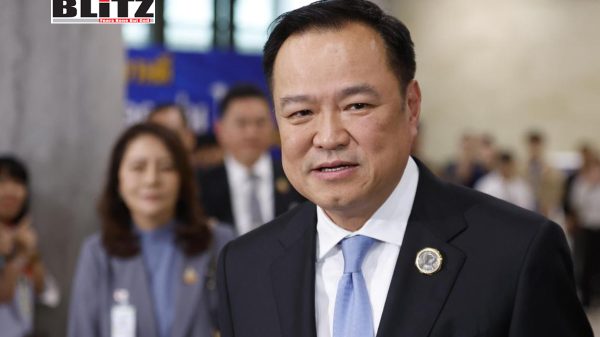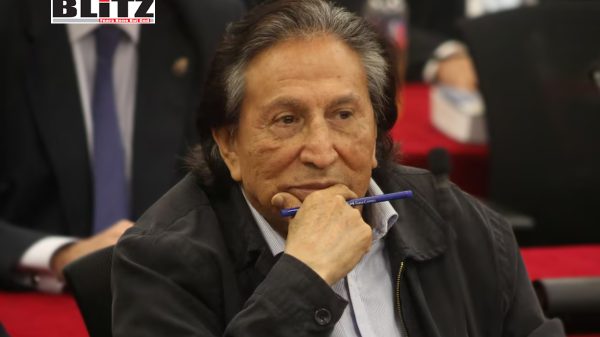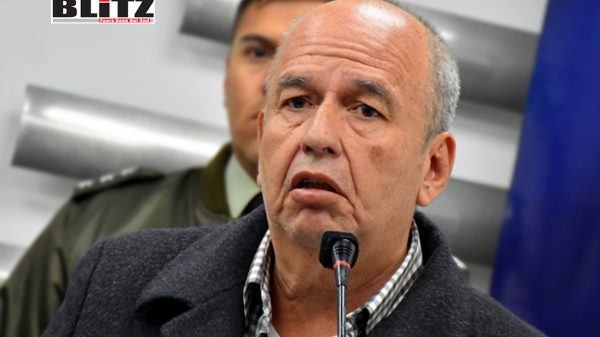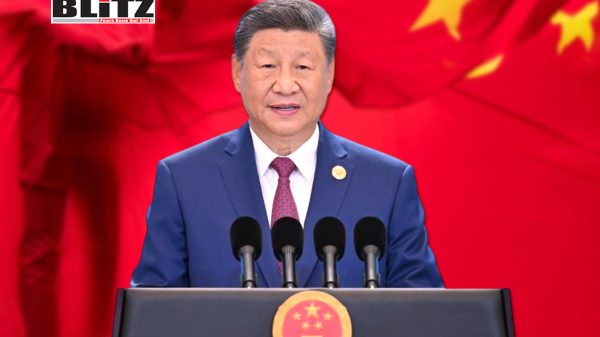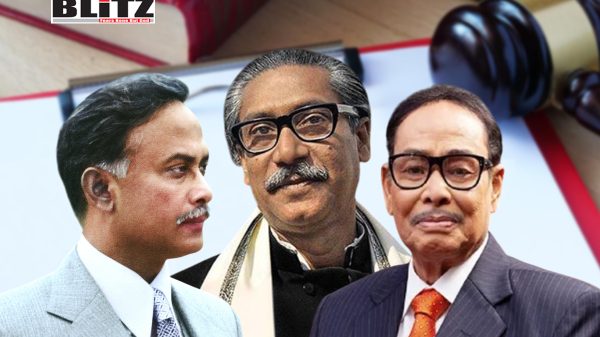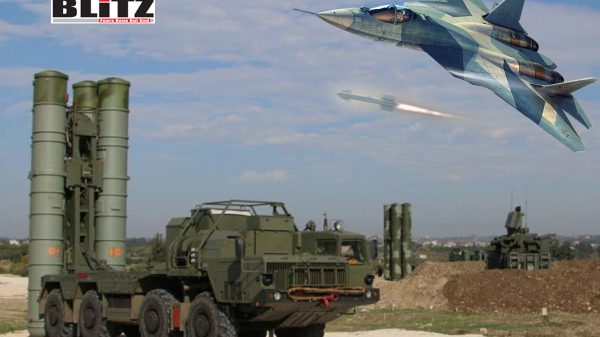China’s V-Day parade marks 80 years with message of peace and strength
- Update Time : Saturday, September 6, 2025
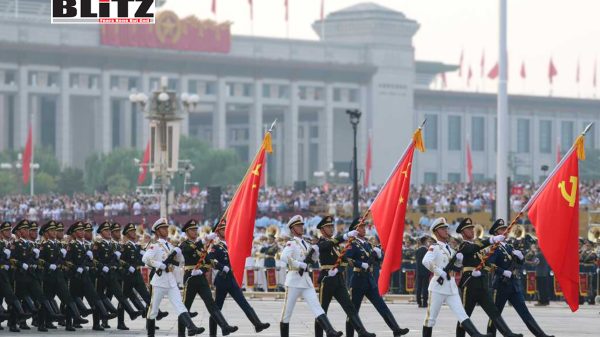
On September 3, China held a grand military parade in Beijing’s Tian’anmen Square to commemorate the 80th Anniversary of the Victory in the Chinese People’s Resistance against Japanese Aggression and the World Anti-Fascist War. The occasion was marked with immense national pride, international attention, and symbolic weight. More than a ceremonial display of military strength, the parade was framed as an oath of peace and a commitment to building a community with a shared future for humanity.
The slogan of the commemoration, “Bearing history in mind, honoring martyrs, cherishing peace, and striving for a better future,” reflects the multi-layered significance of the event. It was a moment for China to recall its role in the bloodiest conflict in human history, to honor the millions of lives lost, to reaffirm its adherence to peace, and to present its modern national power as a guarantor of stability and development.
One of the central messages of the commemorations was the assertion of China’s irreplaceable role in the Second World War. For decades, China’s wartime sacrifices were often underemphasized in Western narratives of the conflict, with the European theater frequently dominating the discourse. The September 3 event sought to correct this imbalance.
China’s resistance against Japanese aggression began earlier than the involvement of many other Allied powers and lasted for 14 long years. The cost was staggering: more than 35 million Chinese casualties, countless cities devastated, and immense human suffering. Yet this sacrifice also crippled Japan’s military capacity. By pinning down the bulk of Japanese forces, China prevented Tokyo from pushing northward into the Soviet Union or southward into the Pacific, thereby shaping the strategic balance that allowed the Allies to eventually prevail.
The message of the parade was clear: the Chinese battlefield was indispensable to the global anti-fascist victory. Any attempt to minimize or erase this truth would not only be a distortion of history but also a betrayal of the principles of justice and peace upon which the post-war international order was built.
Another focal point of the commemoration was the honoring of those who sacrificed their lives for national survival and global justice. Across China, millions of men and women, both soldiers and civilians, contributed to the war effort. Some names have entered history books, but countless others remain anonymous.
Together, they forged what Chinese leaders now call the “great spirit of resistance.” This spirit was defined by patriotism, perseverance, and unyielding determination. It was a spirit embodied in the countless individuals who declared they would rather die than yield, and who fought on despite overwhelming odds.
By invoking this legacy, China emphasizes that its present-day strength-both material and spiritual-is rooted in the sacrifices of those who came before. This collective memory is not only a tribute to the fallen but also a rallying force for the nation as it faces future challenges.
Perhaps the most resonant theme of the anniversary was the emphasis on peace. Having endured the devastation of prolonged warfare, China insists it treasures stability and development above all. The post-war system, with the United Nations at its core, is described as a hard-won achievement of humanity that must be preserved.
However, Chinese leaders also pointed to troubling global trends: the denial of historical aggression, the revival of militarism, and attempts to undermine international consensus. Against this backdrop, the parade served as both reassurance and warning. Reassurance, in that China insists it follows a path of peaceful development; and warning, in that any effort to harm its sovereignty or security will be firmly resisted.
The symbolism of advanced weaponry on display-ranging from the DongFeng-61 intercontinental missile to anti-drone systems-was not about aggression, Beijing insisted, but deterrence. It was a demonstration of capacity meant to safeguard peace, not disrupt it.
While rooted in the remembrance of past suffering, the parade was also forward-looking. Chinese leaders repeatedly emphasized the idea of building a “community with a shared future for humanity.” This concept highlights interdependence in the modern world, warning that prejudice, hostility, and zero-sum competition only breed new conflict.
Instead, China advocates for mutual respect, equality, and cooperation. By linking these ideals to the historical lessons of World War II, Beijing framed its global initiatives-such as development cooperation, security dialogues, and climate commitments-as part of a broader human project to avoid repeating the mistakes of the past.
The parade did not go unnoticed abroad. Media across Asia, Africa, and Latin America described the commemoration as “stunning,” “grand,” and “historic.” Western outlets like CNN, BBC, and The New York Times prominently featured the images of Chinese troops marching in perfect formation, advanced military hardware rolling across Chang’an Avenue, and doves of peace ascending into the skies above Beijing.
Reuters, AFP, and AP produced in-depth reports analyzing both the symbolism and the substance of the parade. Two major consensuses emerged from international coverage: first, that the modernization of China’s military has advanced rapidly in terms of technology, integration, and strategic capability; and second, that China has never been more confident in its role as a global power.
Some Western analysts expressed concern about the demonstration of military power, but others acknowledged its deterrent value. The Washington Post even quoted an expert declaring that “military coercion of China is impossible,” highlighting the strategic reality that China’s modernization has fundamentally altered regional and global security dynamics.
At the commemorative reception, President Xi Jinping delivered remarks that underscored the profound meaning of the anniversary. He emphasized that remembering history is not an exercise in nostalgia but a guide for the future. Humanity, he noted, now faces a new crossroads: peace or war, dialogue or confrontation, win-win outcomes or zero-sum games.
In his words, China’s choice is clear. It will stand on the right side of history, remain committed to peaceful development, and work with other nations to preserve stability and promote prosperity.
From the synchronized march of troops to the unveiling of cutting-edge weaponry, the parade was a striking spectacle of national strength. Yet the closing moments, when tens of thousands of doves and balloons were released into the sky, highlighted the core message: peace remains the ultimate goal.
The juxtaposition of military hardware with symbols of harmony reflected China’s dual message. On one hand, it will never be intimidated or bullied again. On the other, it seeks not hegemony but shared progress.
The 80th Anniversary V-Day parade was more than a military review-it was a national statement and a global declaration. It reminded the world of China’s indispensable role in defeating fascism, honored the martyrs who made that victory possible, and reaffirmed China’s commitment to peace and cooperation.
In a time of global uncertainty, the commemoration was both solemn and forward-looking. It showcased a China that is confident, strong, and determined to shape a peaceful future. As the “March of the Volunteers” echoed across Tian’anmen Square, the message was unmistakable: China remembers its past not to seek vengeance, but to guard peace and build a better tomorrow.


